Drones may be getting smaller and more affordable than ever, but few have yet to be a hit with the honest-to-goodness mainstream audience. The DJI Spark hopes to be the first to make its mark with a blend of compactness, automated features and an affordable price point.
No larger than can of soda and likely smaller than that super-sized smartphone you have in your pocket, the DJI Spark is an amazing example of how small drones can get. While it might be tiny, this drone comes fully packed with technology, including obstacle detection, GPS, stabilization and the ability to recognize hand gestures as flying commands.
Controlling a drone with just a wave of our hand is easily the coolest thing we’ve ever done and the closest we’ve ever come to being a Jedi. However, if you look past the headlining features, the DJI Spark runs into a few unavoidable issues that come with the limitations of being so small.
Pricing and availability
With a starting price of $ 499 (£519, AU$ 859) the DJI Spark is the company’s most affordable drone. At this price point it competes with other affordable drones like the $ 549 (£439, AU$ 649) Parrot Bebop 2 and $ 399 (£439, AU$ 629) Yuneec 4K Breeze.
That said, for 500 bucks you’re only getting the drone by itself without a remote controller. If you want the physical controller and the extended range that comes with it, that’ll be an additional $ 149 (£159, AU$ 259). Alternatively, the $ 699 (£699, AU$ 1,199) Fly More combo comes with the remote controller, a set of replacement propellers, an additional battery, battery charging hub and shoulder bag.

Design
It’s no joke that the DJI Spark is as small as a can of soda. Measuring in at a scant 143 x 143 x 55mm and 300 grams (10.6 ounces), the mini drone is something you can easily stuff into any bag or even hang off the back of your belt.
The DJI Spark also comes in a small foam box that’s really no bigger than a headphone case we would normally put into our bag. The included storage box also has compartments for four replacement propellers and two extra batteries.
Aside from its small size, the Spark is DJI’s first drone to be offered in a variety of colors: Alpine White, Sky Blue, Meadow Green, Lava Red and Sunrise Yellow. The splash of color is welcome piece of personalization in a world of drones that have thus far been a mix of gray, white and black.

In terms of looks, the Spark is a lot like a shrunken DJI Mavic Pro, and that shouldn’t really come as a surprise. It has a very similar angular body with a camera hanging right underneath the front sensor array.
One key difference of the Spark is its limbs don’t fold into the drone like the Mavic Pro and GoPro Karma Drone. The good news is you can fold the propellers to make it a smaller package and these rotor blades will also lock into flight position once they start spinning.
Unlike most other drones, the DJI Spark also has stubbly feet rather than extended landing gear. This is in part to keep the drone as small as possible while also making it comfortable enough to hold when landing the drone onto your palm. That said, the Spark’s tiny feet make it harder to land on uneven and rocky surfaces.
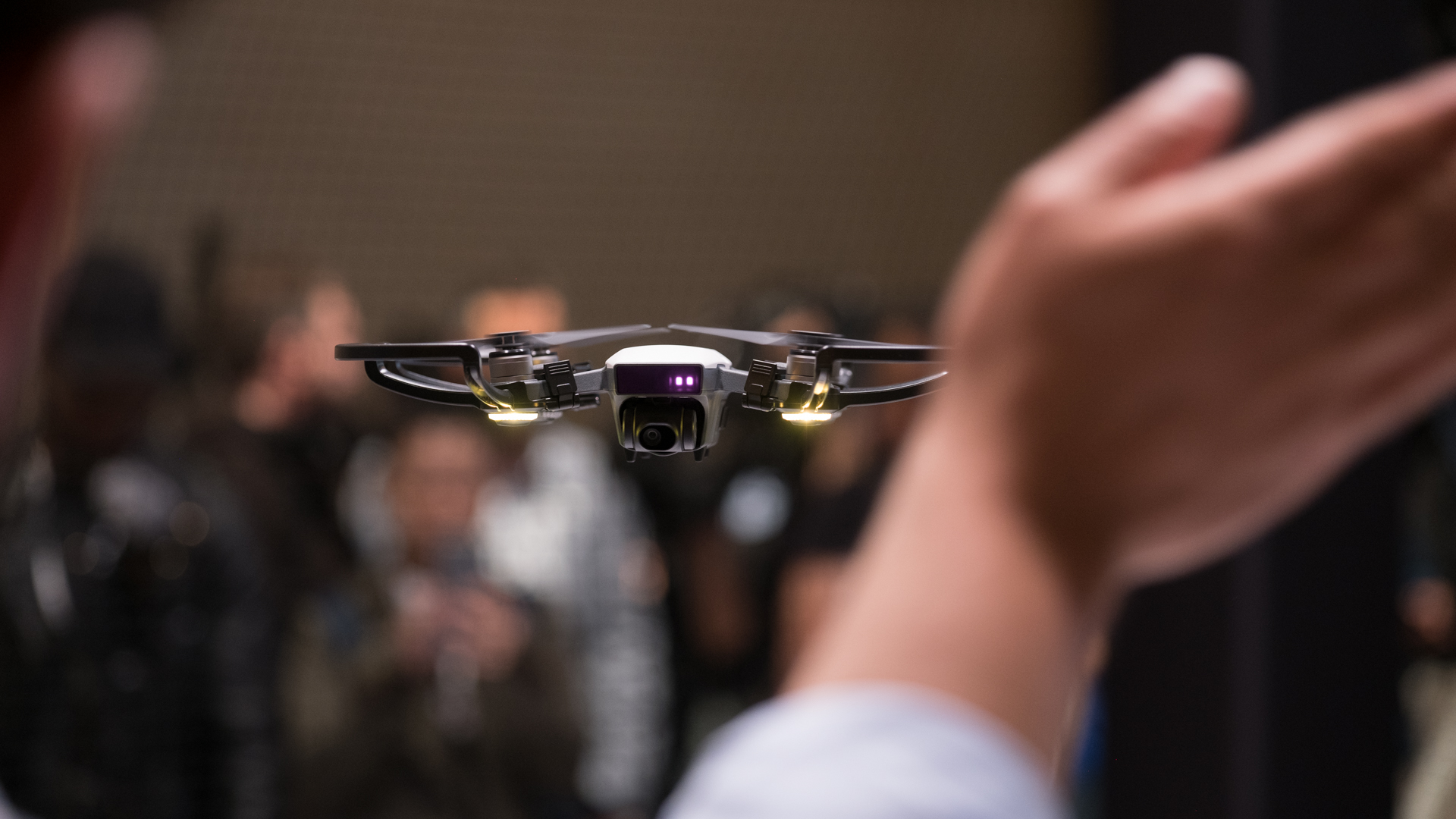
Build and handling
The DJI Spark might be small, but its main body feels dense and solid as a brick. The drone’s limbs feel just a sturdy thanks to some heavy ribbing. With nearly zero visible seams along the drone’s body, it’s clear that most of the Spark’s fuselage is molded from one solid piece of plastic.
Taking off with the DJI Spark takes mere seconds of setup with attaching the propeller guards, turning it on and linking it to your smartphone through the DJI Go 4 app.
Alternatively, you can skip the controller and command the DJI Spark with just hand gestures through the new feature called PalmControl.
Spoilers, this is easily the DJI Spark’s coolest hat trick.
You can have the drone take off from the palm of your after it scans your face. From there you can wave your hands at it to take control of flying it like a Jedi moving objects with the force. Waving your hand commands the drone to fly up and away from you, after which you can form a picture frame with your fingers to have it take a selfie.
Although PalmControl feels intuitive enough, it is also very finicky if you want to do anything beyond the basic navigation commands. You have to wave at the drone in just the right way, and selfies only trigger a third of the time when we make the picture frame gesture.
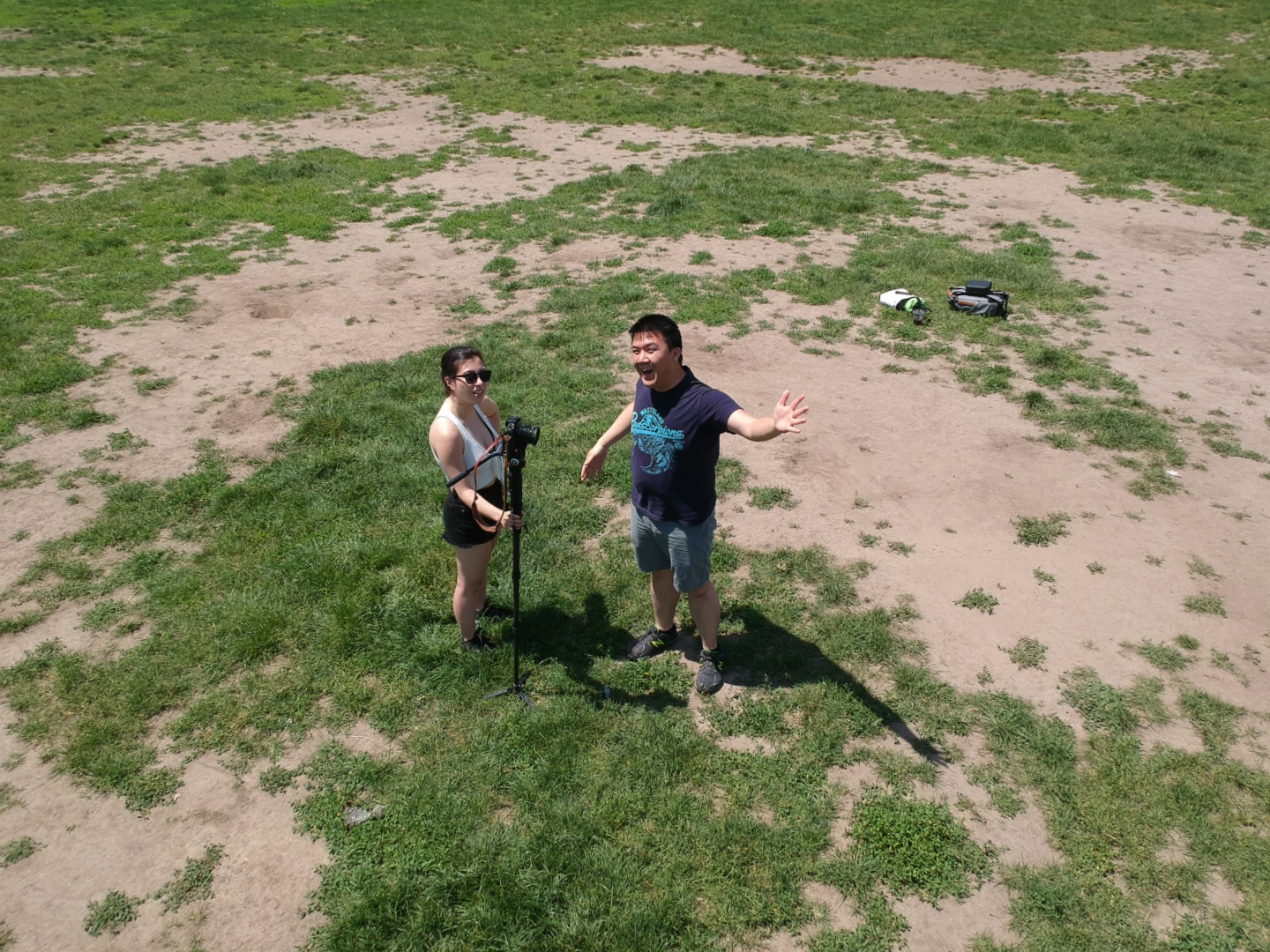
Another catch of PalmControl is that you need to be within 10-feet of the drone for it to recognize your gestures.
When everything lines up and PalmControl does work perfectly, it feels like magic. Flying a drone becomes spontaneous without a controller. It’s also much more inviting to less-seasoned aviators and tech-savvy people who want try their hand at flying drones.
In fact, we started the drone in PalmControl several times and after just a few moments of instruction we passed control to our friends and family members with ease.
Counter to its small size, the DJI Spark comes with powerful motors that make it nimble in the air. However, at the same time, the Spark visibly struggles to hover in the presence of a heavy breeze, as it shakes in the wind at an off axis. This is especially problematic, as the camera gimbal can’t articulate far enough to compensate for the tilting drone and give you a level horizon line.
At one point in our review, we had to catch the drone before it drifted into a railing on the pier and flipped into the water. The drone was saved from a dip in the drink, but in the process we sustained minor lacerations.
Despite our turbulent experience with the DJI Spark outside, this was the first drone we could reliably fly indoors. It’s maneuverable and predictable enough to be used with the PalmControl gesture commands, and we even had it autonomously follow us through a narrow hall using ActiveTrack.
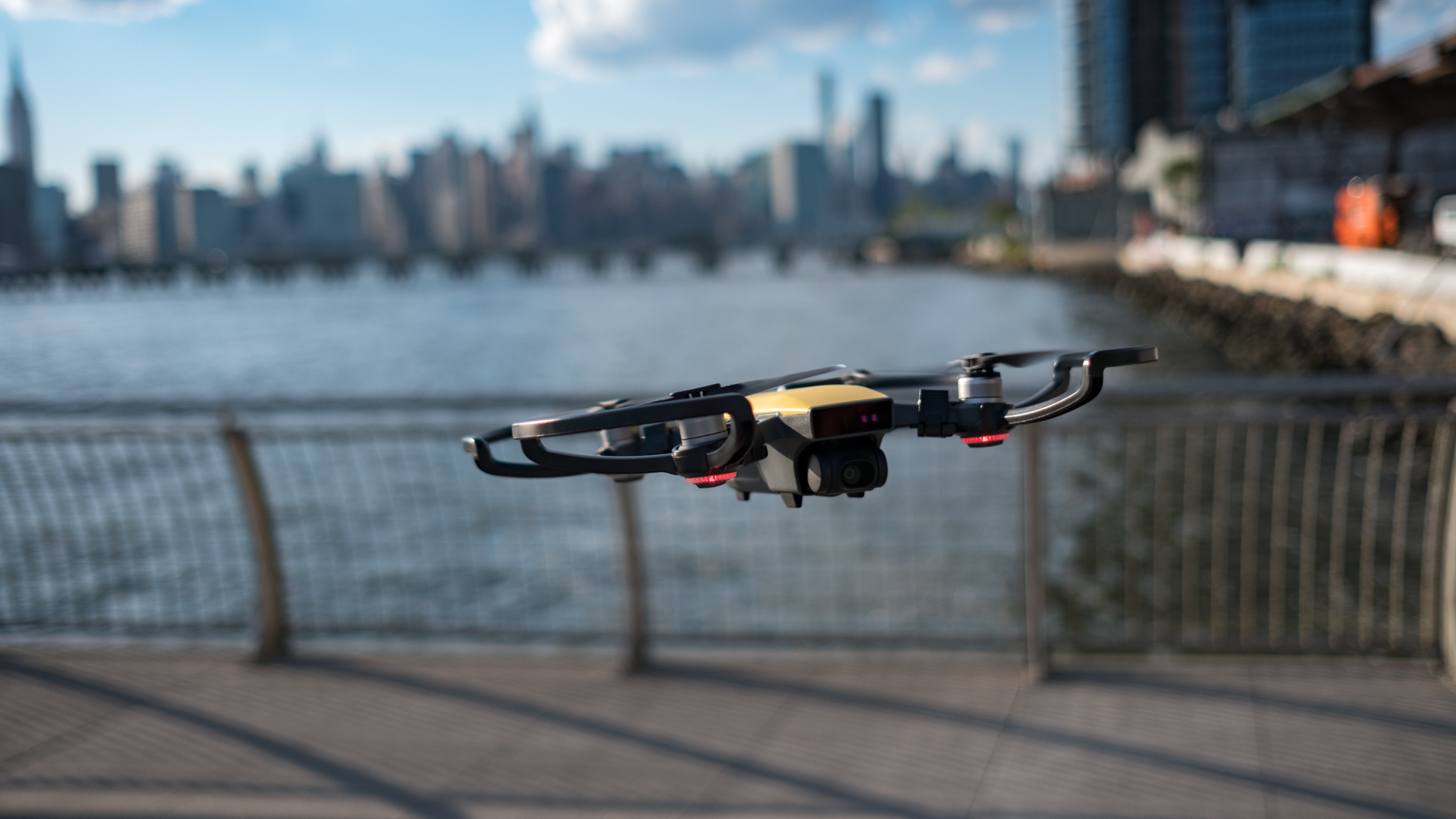
Speaking of autonomous modes, DJI has also introduced new four automatic flight maneuvers called Quickshots, which are a lot like GoPro Karma Drone’s Auto Shot Paths. The four modes include, Dronie for taking an aerial selfie, Helix plots an upward spiraling path, Rocket sends the drone straight into the sky with the camera looking down, and lastly, Circle has the drone rotate around the user.
Aside from the new features, DJI intelligent flight modes return to the Spark including TapFly to automatically navigate to preset points. ActiveTrack, which we’ve mentioned before, programs the drone to do its best to keep you in the same position in the frame while avoiding obstacles as it flies.
That said, you shouldn’t become too overconfident about the DJI Spark’s intelligence.
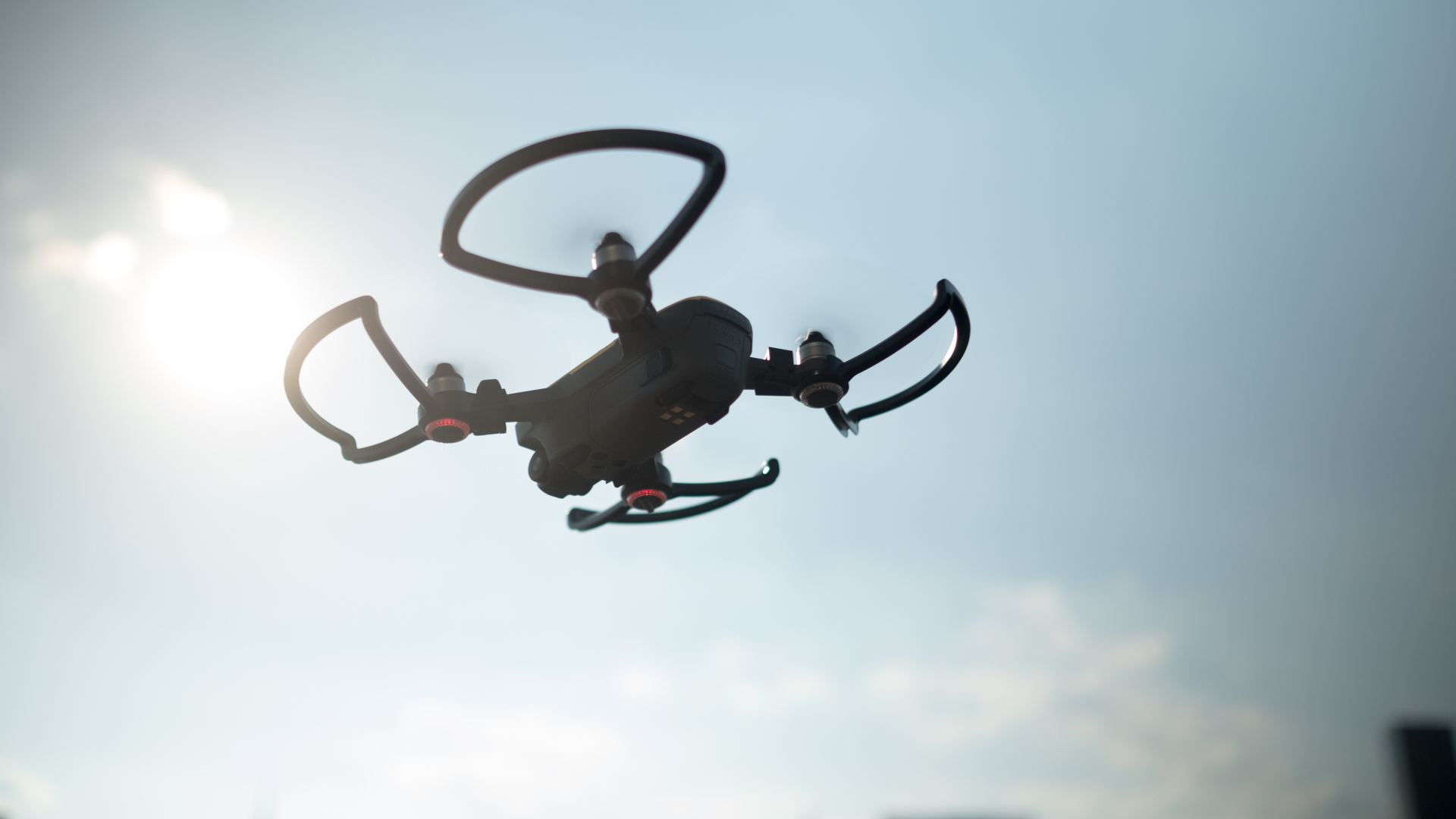
Front facing smarts
While the DJI Spark comes collision detection technology as part of its FlightAutonomy system, many of these sensors are front facing only. The obstacle avoidance sensor array consists of just a main camera and forward-facing 3D Sensing System.
Meanwhile, the downward-facing vision system, dual-band GPS (Global Positioning System), GLONASS (Global Navigation Satellite System) and a high-precision inertial measurement unit all help the drone navigate and tell you where it's flying.
DJI Spark can sense when you’re about to send it flying into a pole, but it won’t detect when it’s about to back up into a tree. It’s a limitation you’ll need to keep in mind when you’ve plotted a flight path or enabled Quickshots. Still, we’ll take the few sensors this drone has over the completely blind GoPro Karma Drone any day.
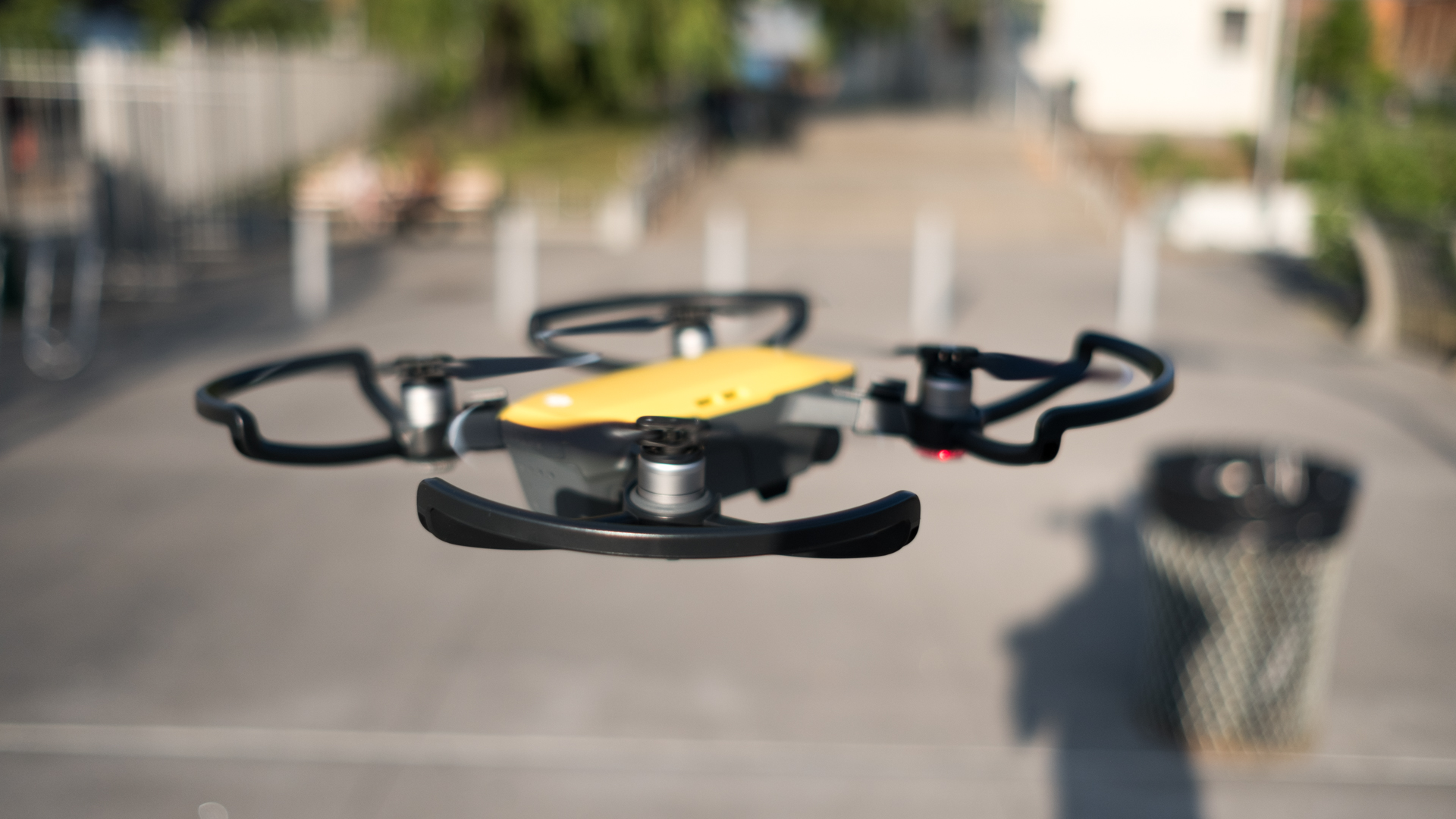
It’s also impressive that all these sensors feed information into a single Intel Movidius Myriad 2 Vision Processing Unit, which takes care of the collision detection, gesture recognition on top of image processing for the main camera.
Similar VPU chips have made their way into DJI’s drones for the last three years, but this is the first to feature a fully built gesture recognition system according to Remi El-Ouazzane, Vice President of Intel New Technology Group and General Manager of Movidius.
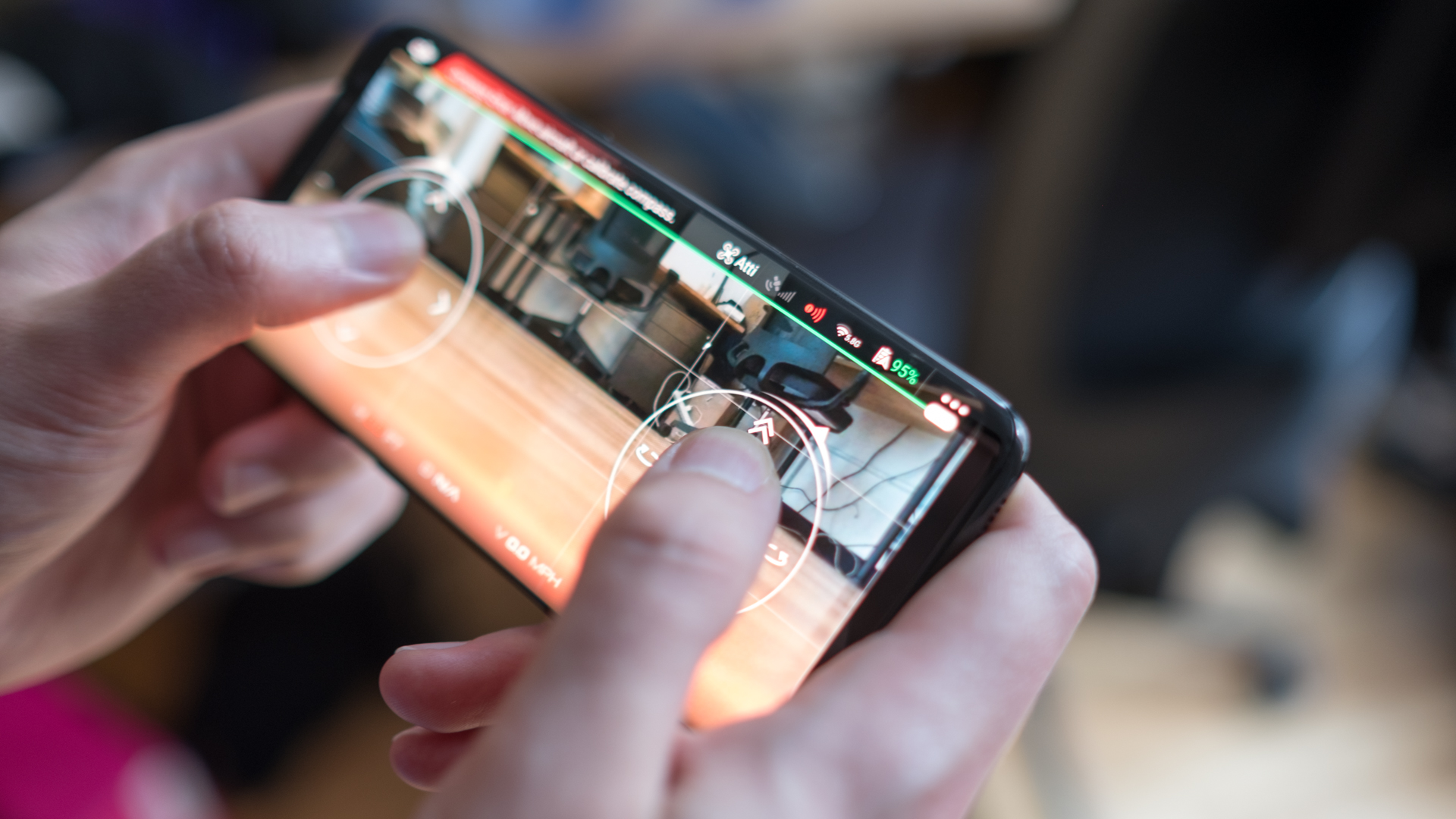
The limits of going small
One of our other big problems with the DJI Spark was its limited connectivity, which is due in part to its small size not allowing for a bigger Wi-Fi antenna and also not having the remote controller in hand. When connected to a smartphone, the drone’s effective range is 328 feet (100m); in our experience, the signal starts degrading around the 50- to 75-meter mark.
In more urban areas – such as the pier and city parks – even flying the drone 35m away would cause our video feed artifact and cut out. Worse yet, our control over the drone would intermittently cut out leading to jerky motions or overexaggerated maneuvers.
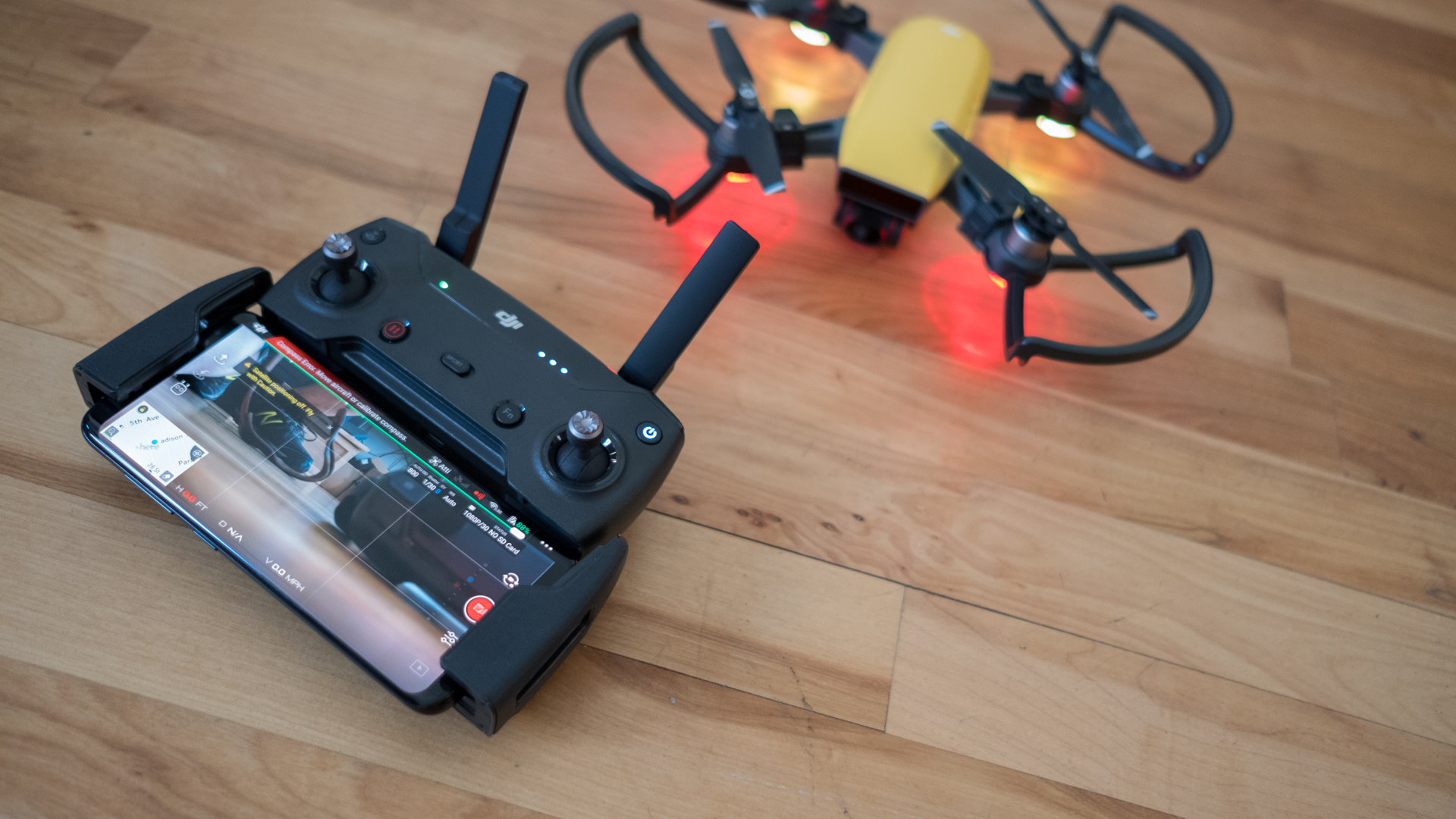
A lot of these problems are solved by the dedicated remote controller. However, it’s an additional $ 149 (£159, AU$ 259) purchase if you’ve just bought the drone.
It’s a required accessory in our book, as it extends the range of the drone to 1.2 miles (2km) and makes it reliably responsive. All the connection hitches we encountered with using just the smartphone by itself disappear and using the physical joysticks gives us more precision for our aerial maneuvers. That said, you’ll lose a signal if you try to control the drone through a wall or send it too far away.
With the remote controller, you can also shift the drone into sport mode, which allows it to fly up to 31 miles per hour. Combined with DJI’s Goggles first-person view headset for $ 449 (£499, AU$ 769), the DJI Spark could make for an interesting racing drone for beginners.
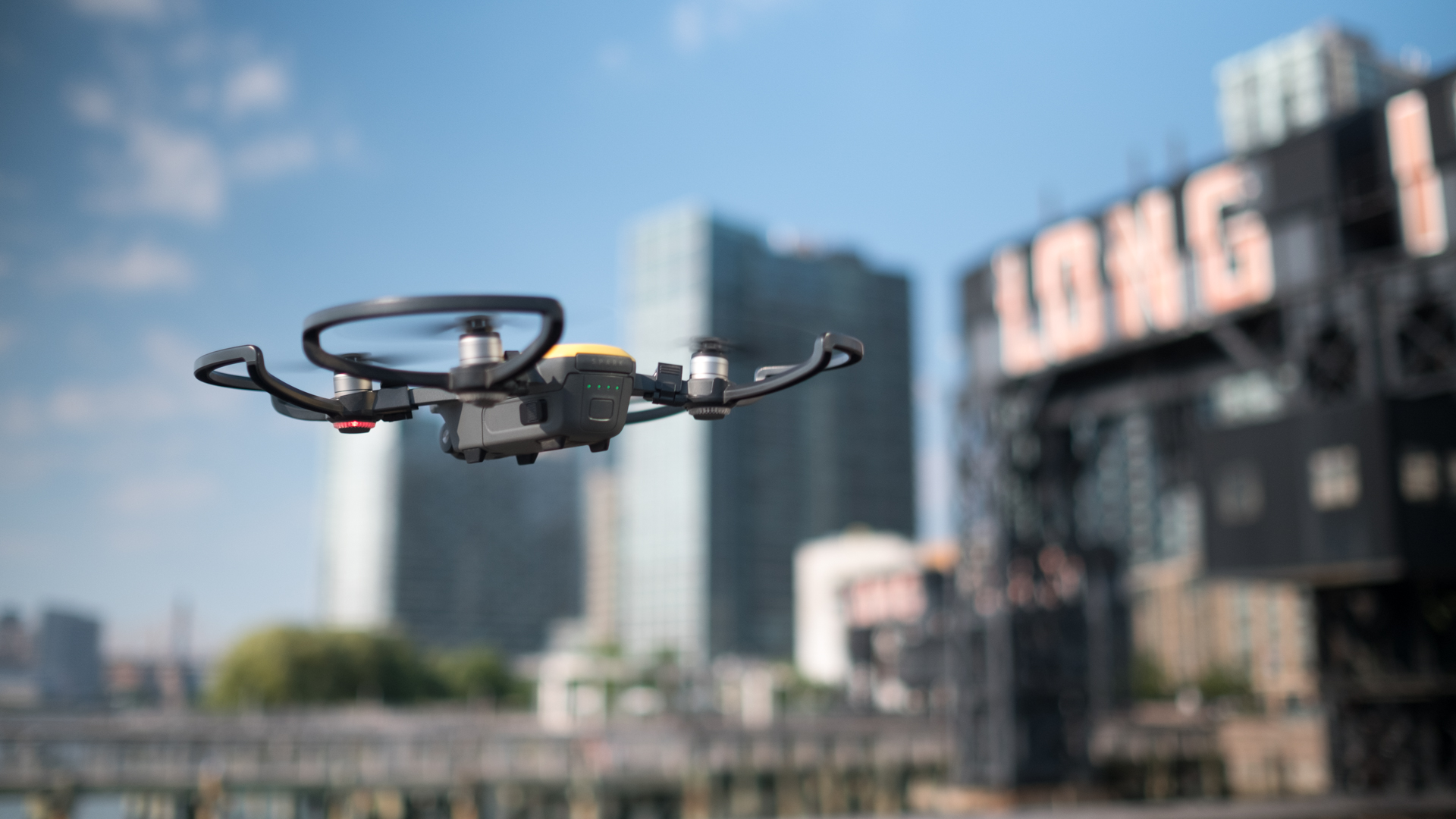
Another shortcoming is DJI rates the Spark’s battery life at 16 minutes, which ends up being closer to 12 minutes of flight time, since you’ll want to reserve juice for landing safely. It’s the shortest battery life we’ve seen from DJI’s drones, but at the same time its impressive given the Spark’s power pack is so small. The GoPro Karma Drone runs for just as long with a battery that’s easily five times larger.
Another good bit of news is the Spark can also be charged up through its microUSB port, allowing you to top it off with a portable power bank or plugging it in while you get coffee. Even with this convenience though, you’ll likely need a spare battery (or two) if you mean to do anything more than a quick flyby and a few selfies.
Video capture
In terms of recording capabilities, the main camera is equipped with a 12-megapixel 1/2.3-inch CMOS sensor that can capture Full HD video at 30p and 3,968 x 2,976 resolution images. In front of the digital sensor is a 25mm (35mm equivalent) f2.6 lens that captures an effective 81.8-degree field of view.
The maximum video resolution is a step down from the DJI Mavic Pro and GoPro Karma Drone, which can both record video at 4K resolution. We would say this is an unfortunate downside of the entry-level price, but the lower-priced Yuneec 4K Breeze can also shoot Ultra HD video – admittedly while sporting far fewer features.
So it’s actually electronic image stabilization – on top of a two-axis gimbal – that ends up eating up pixels around the edges and prevents the DJI Spark from shooting in 4K. The good news is all of this stabilization eliminates most vibrations caused by the drone flying around or wind blowing against it.
The backbone of the DJI Spark’s video shooting capabilities is the DJI GO 4 app, which catalogs every piece of content you capture with the drone. From there you can select clips to be combined automatically into highlight reels and share them. Just remember to transfer the original video files, which unfortunately doesn’t fix the low quality songs that are included with the app.
This last level of automation makes it that much easier record and produce video without much knowhow.
We liked
Controlling a drone with just your hand is easily one of the coolest things we’ve ever done with technology. Palmcontroling the Spark is intuitive enough for anyone to start flying, and it’s also just plain fun.
For $ 499 (£519, AU$ 859), you also won’t find another drone packed with as many features as this. From Palmcontrol to Quickshots, Spark simplifies the intimidating aspect of drones – flying them. Meanwhile, the DJI Go 4 app automates the video editing process in a way that most users can also appreciate.
We disliked
We wished the DJI Spark was more stable in the air and had a longer battery life, but these are the limitations of going so small. Given our intermittent connection issues with controlling the drone through a smartphone, you’ll definitely want to invest in a controller for the extended range along with a few extra batteries.
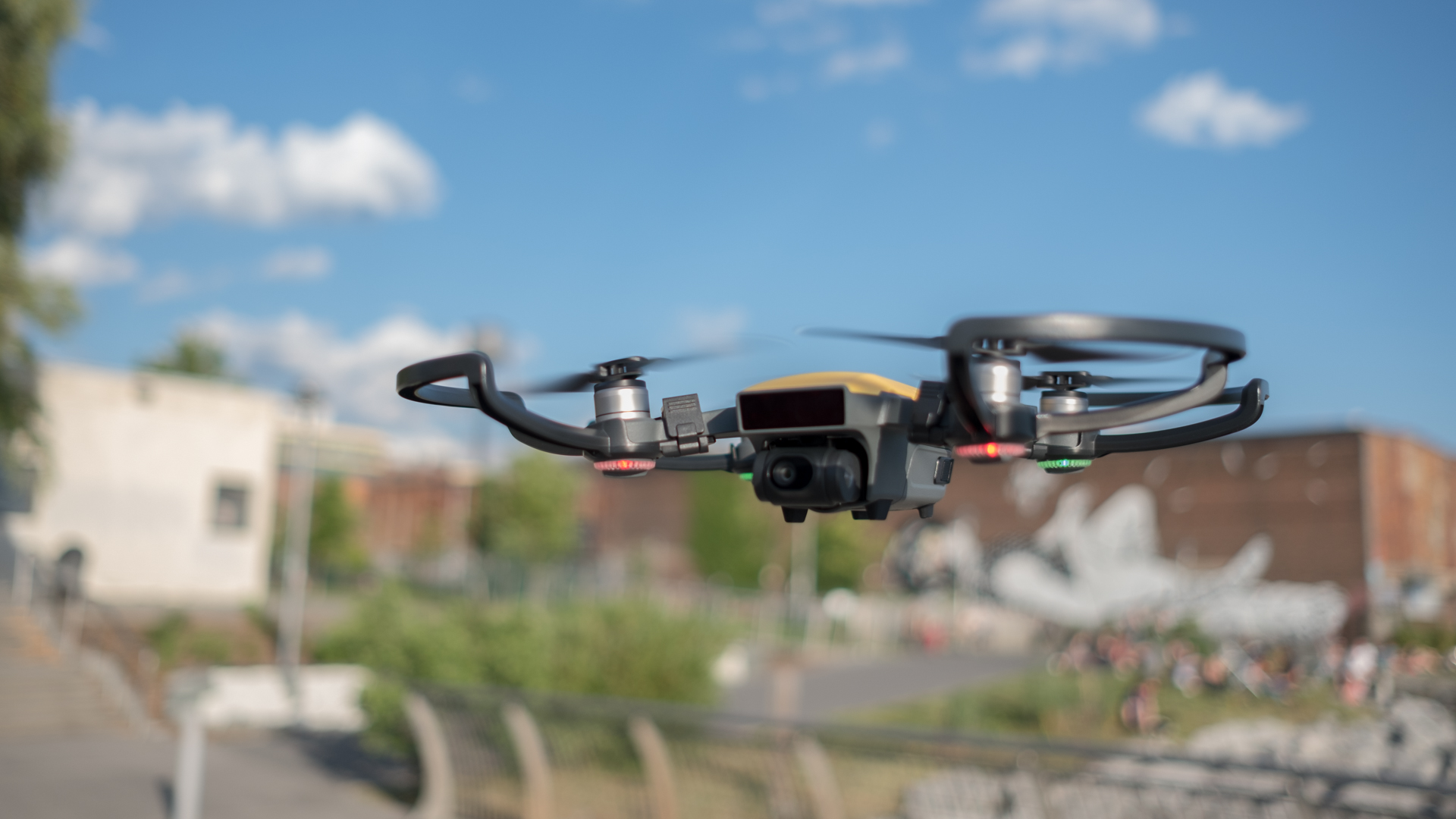
Final verdict
There’s no question the DJI Spark is the company’s most approachable drone yet with intuitive gesture controls, a compact frame and low-enough price to compete with other affordable quadcopters. From the PalmControl, Quickshots and deeper smartphone integration, DJI has broken multiple barriers of entry that make drones seem intimidating.
That said, the DJI Spark experience isn’t flawless, especially if you don’t use it with a controller. The gesture controls can be finicky and require a bit of patience. The short flight time also basically requires you to carry around spare batteries.
DJI is a company that constantly iterates and updates its drone, so we’re sure the DJI Spark will get better with time. Until then, the DJI Spark is a great drone for its price and one you’ll definitely want to check out even if it isn’t completely perfect.
- The best drones: DJI, Parrot and more for pros and beginners